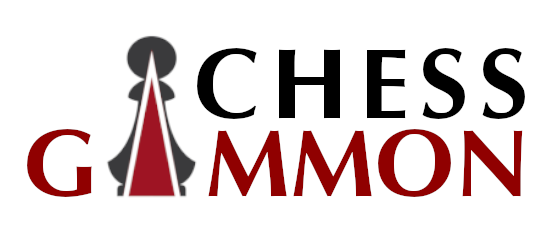- Overview of the Scandinavian Defense
- Introduction to the Gubinsky-Melts Defense
- Key Moves and Strategies in the Gubinsky-Melts Defense
- Benefits of Using the Gubinsky-Melts Defense
- Common Mistakes to Avoid in the Gubinsky-Melts Defense
- Notable Games and Players Utilizing the Gubinsky-Melts Defense
Overview of the Scandinavian Defense
This opening, also known as the Centre Counter Defense, is a popular choice for players looking to surprise their opponents and create dynamic positions on the board. Feel free to take a look at other famous chess moves, our article, The 40 Famous Chess Moves to Learn runs this through in a lot of detail.
So, what exactly is the Scandinavian Defense? Well, in simple terms, it begins with the moves 1. e4 d5. Black immediately challenges White’s centre pawn on e4, taking the game into uncharted territory from the very beginning. This aggressive approach by Black can catch many opponents off guard and set the stage for an exciting battle.
One of the main ideas behind the Scandinavian Defense is to quickly develop pieces and exert pressure on White’s position. By challenging the central pawn on e4 early on, Black aims to disrupt White’s plans and seize the initiative. This opening can lead to sharp and tactical positions, making it a favorite among players who enjoy dynamic play.
While the Scandinavian Defense may not be as mainstream as some other openings, it has been played by many top-level players over the years with great success. By understanding the key concepts and ideas behind this opening, you can surprise your opponents and forge your own path to victory on the chessboard.
In the following sections, we will explore variations of the Scandinavian Defense, including the Gubinsky-Melts Defense, discuss key moves and strategies, outline the benefits of using this opening, highlight common mistakes to
Introduction to the Gubinsky-Melts Defense
So you’re a chess aficionado looking to add another technique to your arsenal, huh? Well, look no further because today we’re diving into the fascinating world of the Gubinsky-Melts Defense. This variation of the Scandinavian Defense is like a hidden gem waiting to be discovered, and I’m here to guide you through it.
Now, you might be wondering, what makes the Gubinsky-Melts Defense so special? Well, for starters, it’s a relatively unexplored territory in the world of chess openings. By opting for this defense, you’re already catching your opponent off guard and steering the game into unfamiliar waters. It’s like having a secret weapon up your sleeve.
This defense, named after Russian players Alexander Gubinsky and Efim Melts, involves a quick fianchetto of the king’s bishop after playing …d5 in response to White’s e4 opening move. This seemingly subtle move has the potential to lead to complex positions with dynamic play, giving you plenty of opportunities to outsmart your opponent.
As you delve deeper into the Gubinsky-Melts Defense, you’ll realize that it’s not just about making random moves on the board. It requires strategic thinking, careful planning, and a good understanding of pawn structures. By mastering this defense, you’ll be able to dictate the flow of the game and keep your opponent on their toes.
One of the key advantages of
Key Moves and Strategies in the Gubinsky-Melts Defense
Alright, let’s dive into the exciting world of the Gubinsky-Melts Defense! This unconventional opening, which stems from the Scandinavian Defense, offers a fresh perspective and can catch your opponent off guard.
One of the key moves in the Gubinsky-Melts Defense is when Black plays 1.e4 d5 2.exd5 Qxd5 3.Nc3 Qa5. This move by Black aims to develop the queen early on and put pressure on White’s position. From here, Black can continue to develop their pieces and control the centre of the board.
Another important strategy in the Gubinsky-Melts Defense is to castle queenside. This move can help to secure Black’s king and also allow for the rook to be easily activated along the open c-file. By castling queenside, Black can create a solid defensive position while maintaining flexibility for future attacks.
In the Gubinsky-Melts Defense, it is crucial for Black to play actively and focus on piece development. It is important to avoid falling into a passive position and instead look for opportunities to seize control of the board. By developing pieces quickly and efficiently, Black can put pressure on White and create chances for a successful counterattack.
One important thing to keep in mind when playing the Gubinsky-Melts Defense is to be mindful of potential pawn breaks by White. It is essential
Benefits of Using the Gubinsky-Melts Defense
So you’ve heard about the Gubinsky-Melts Defense and you’re wondering if it’s worth adding to your repertoire. Well, let me tell you, there are some fantastic benefits to using this defense strategy in your chess games.
1. **Surprise Element**: One of the key advantages of the Gubinsky-Melts Defense is that it’s not as commonly played as other defenses, such as the Scandinavian or Sicilian Defense. This can catch your opponent off guard and disrupt their usual opening strategies, giving you an early psychological advantage.
2. **Solid Pawn Structure**: The Gubinsky-Melts Defense focuses on building a solid pawn structure in the centre of the board. By establishing a strong foundation early on, you can control key squares and limit your opponent’s mobility. This can lead to a more solid position and provide you with more options for developing your pieces.
3. **Counterattacking Opportunities**: The Gubinsky-Melts Defense allows for quick development of your pieces, giving you the chance to launch counterattacks against your opponent’s position. It can create dynamic and tactical positions on the board, which can be exciting to play and keep your opponent on their toes.
4. **Active Piece Play**: With the Gubinsky-Melts Defense, you can aim to place your pieces in active and harmonious positions, enabling you to exert pressure on your opponent’s position. This can
Common Mistakes to Avoid in the Gubinsky-Melts Defense
So you’ve decided to try out the Gubinsky-Melts Defense in your chess games. That’s a bold move! But before you dive in headfirst, it’s essential to be aware of some common mistakes that players make when using this defense. By avoiding these pitfalls, you’ll set yourself up for success and be better equipped to handle whatever your opponent throws at you.
If you’re new to the Gubinsky-Melts Defense, it’s easy to get caught up in trying to remember all the intricate variations and moves. However, one of the most common mistakes players make is focusing too much on memorizing specific moves rather than understanding the underlying principles of the defense. Remember that chess is a game of strategy and tactics, so it’s crucial to grasp the ideas behind the moves you’re making.
Another common mistake is neglecting your development in the opening phase of the game. While the Gubinsky-Melts Defense offers solid counterplay and opportunities for attack, it’s vital not to fall behind in development compared to your opponent. Make sure to prioritize developing your pieces efficiently and controlling the centre of the board to maintain a strong position.
It’s also essential to be mindful of your pawn structure when playing the Gubinsky-Melts Defense. Avoid making hasty pawn moves that weaken your position or create vulnerabilities for your opponent to exploit. Take the time to assess the consequences of each
Notable Games and Players Utilizing the Gubinsky-Melts Defense
So, you’ve decided to explore the intriguing world of the Gubinsky-Melts Defense in the Scandinavian Defense. Buckle up, because this defense is not only unique but also has its fair share of exciting games and players who have mastered its intricacies.
One player who has made waves with the Gubinsky-Melts Defense is Grandmaster Evgeny Gubinsky himself. Known for his expertise in this particular variation, Gubinsky has showcased the power and flexibility of this defense in numerous games against strong opponents.
Another notable player who has successfully employed the Gubinsky-Melts Defense is Grandmaster Evgeny Melts. With his strategic prowess and deep understanding of the defense, Melts has demonstrated how to effectively navigate the complexities of this variation and outplay opponents.
One game that stands out as a showcase of the Gubinsky-Melts Defense is the match between Gubinsky and Melts themselves. This intense battle of wits highlights the depth and richness of this defense, with both players showcasing their skills and tactical acumen.
In another memorable game, Grandmaster Magnus Carlsen, the current World Chess Champion, surprised his opponent with the Gubinsky-Melts Defense, catching them off guard and gaining a significant advantage in the middle
Conclusion
Ah, what an exciting journey we’ve had exploring the intricacies of the Gubinsky-Melts Defense in the Scandinavian. As we wrap up our discussion, let’s take a moment to reflect on the key takeaways from our exploration.
First and foremost, the Gubinsky-Melts Defense offers a fresh and innovative approach to the Scandinavian Defense, providing players with new opportunities for creative and dynamic play. By deviating from traditional lines and opting for this lesser-known defense, you can catch your opponent off guard and steer the game in directions they might not expect.
Throughout our discussion, we’ve highlighted the importance of key moves and strategies in the Gubinsky-Melts Defense. Remember to focus on controlling the centre, developing your pieces efficiently, and keeping a keen eye out for tactical opportunities. By staying vigilant and proactive in your gameplay, you can capitalize on the benefits that this defense has to offer.
Speaking of benefits, let’s not forget the advantages of using the Gubinsky-Melts Defense. From disrupting your opponent’s plans to gaining a solid position on the board, this defense can give you a competitive edge and lead to exciting gameplay opportunities. Embrace the challenges and rewards that come with exploring new openings, and watch your skills as a chess player grow.
Of course, no discussion would be complete without addressing common mistakes to avoid in the Gubinsky-Melts Defense. Remember to stay flexible in your approach, adapt to your opponent’s






